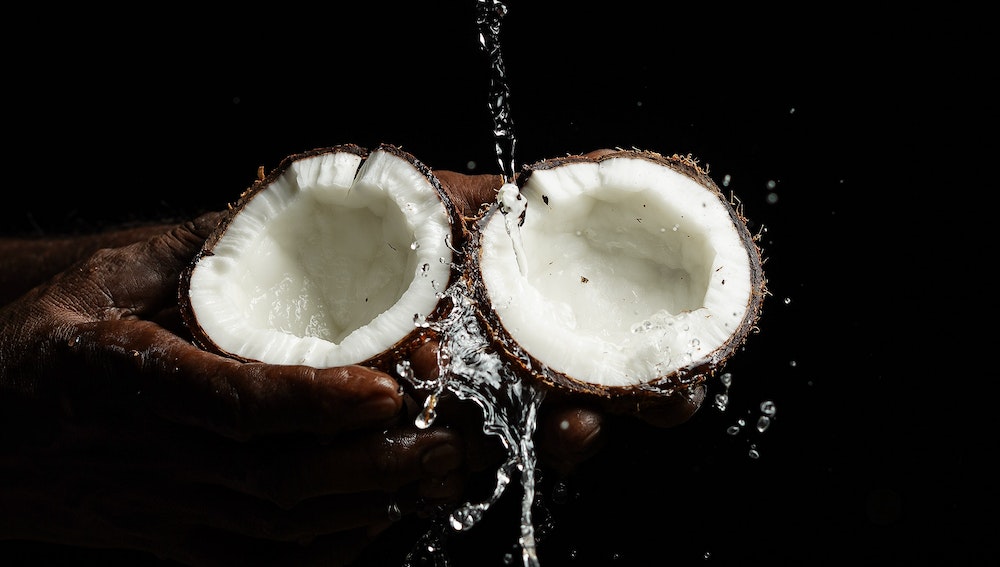Many people wonder if food coloring imparts any taste to the foods and beverages in which they’re used. While food coloring is essentially added to lend a visually appealing hue to our meals, its impact on flavor is not as straightforward as one might assume.
The interplay between color, taste perception, and psychology plays a significant role in determining if food coloring does indeed have a taste.
Understanding the different types of food coloring is crucial in discerning whether they have a taste or not. There are two primary categories of food coloring: natural and artificial.
Natural food coloring derives from plant, animal, and mineral sources, whereas artificial food coloring is synthesized using chemicals. The distinction between these categories is a vital factor in determining the taste associated with each type of food coloring.
Experimentation and frequently asked questions regarding food coloring offer a wealth of knowledge about its impact on taste. Researchers have conducted various tests to determine the effects of food coloring on people’s perception of flavor.
It is important to analyze the results of these experiments and take them into account when answering the question, “Does food coloring have a taste?”
Key Takeaways
- Interplay between color, taste perception, and psychology affects how food coloring may taste.
- Natural and artificial food coloring differ in taste due to their distinct sources.
- Experiments and frequently asked questions help understand the impact of food coloring on flavor perception.
Understanding Food Coloring
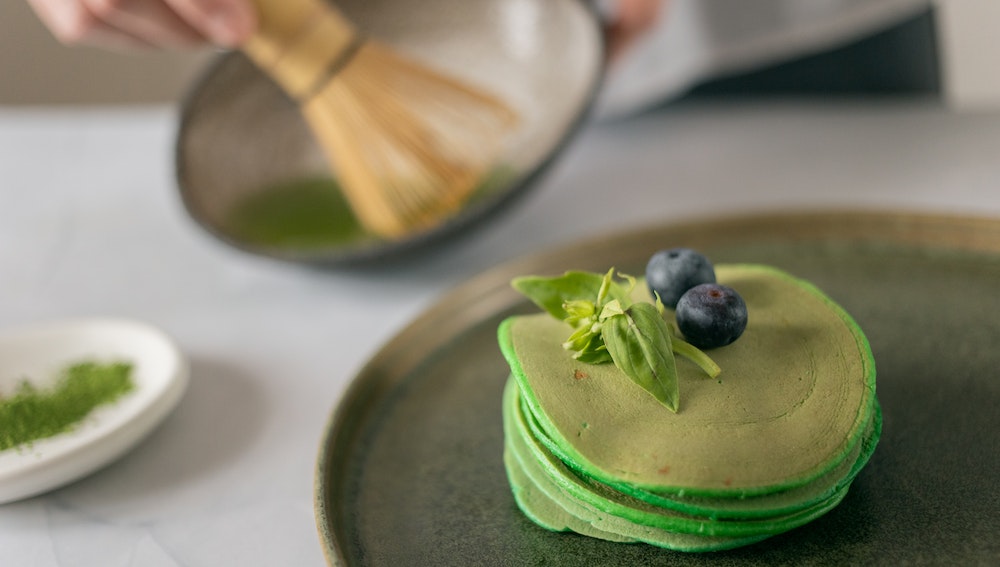
Food coloring is a substance used to add color to various food items. It comes in different forms, such as liquid, gel, and gel paste. There are also various shades available, including red, green, and blue food coloring.
Understanding the properties and applications of each type can help determine whether food coloring imparts a taste to the dishes in question.
Liquid food coloring is the most common type, and it is typically made from water, glycerin, and synthetic or natural color pigments. It is easy to mix into various recipes and blends well with liquids, posing minimal impact on the texture of the final product.
However, due to its varied composition, the taste of liquid food coloring can differ from brand to brand. Some may have a mild taste, while others might impart a slightly bitter flavor, depending on the concentration and pigments used.
Gel food coloring, on the other hand, has a thicker consistency than its liquid counterpart. It provides more vibrant colors with less product, making it ideal for coloring icings, fondants, and batters.
Since gel food coloring contains a higher color concentration, the possibility of it affecting the taste is relatively low. Still, the taste may vary slightly depending on the ingredients and type of food being prepared.
Gel paste food coloring is similar to the gel type but with an even higher concentration of color pigments. It imparts strong, vivid hues to recipes, requiring only small amounts for noticeable color enhancement.
This high concentration means that the taste of gel paste food coloring is generally negligible and should not interfere with the flavors of the dish.
In terms of artificial and natural food colorings, there is a distinction concerning taste and safety. Artificial food colorings, derived from synthetic sources, might contain trace chemicals that can affect the taste.
However, this effect is usually minimal and unlikely to be discernible. Natural food colorings, sourced from plant-based materials such as fruits, vegetables, and spices, are less likely to affect the taste of a recipe negatively. In some cases, they might even contribute subtle flavors that complement the dish.
In summary, food coloring consists of different types, such as liquid, gel, and gel paste, each with unique properties and applications. Whether food coloring impacts the taste depends on the concentration, color pigments, and recipe ingredients.
While it is possible for food coloring to have a mild taste under certain circumstances, it generally does not have a significant effect on the overall flavor of the dish.
Taste and Perception
Food coloring, a common ingredient used to alter the appearance of various dishes, raises the question of whether it has a discernible taste. Taste and perception play crucial roles in the overall experience of consuming food.
Flavors are detected by the tongue’s taste buds, while the perception of taste involves multiple senses, including smell and texture.
In general, food coloring is designed to be tasteless, allowing it to subtly enhance visual aesthetics without affecting flavor profiles.
However, some individuals may detect subtle variations in taste when certain types or concentrations of food colorings are used. These minor discrepancies are typically a result of individual differences in taste perception and sensitivity.
The use of food coloring also has the potential to influence the perception of a dish’s flavor, even when its actual taste remains unchanged.
This phenomenon occurs due to the interplay between visual cues and expectations. For example, altering the color of a drink can lead people to perceive flavors that may not inherently exist in the beverage.
It is important to consider the psychological aspect of flavor perception when using food coloring. The appearance of a dish, including its color, can create expectations about how it should taste.
These expectations, in turn, can influence the way an individual perceives the dish’s actual taste. In some cases, the addition of food coloring could enhance the overall dining experience, heightening flavors that are already present in the dish.
In conclusion, although food coloring is generally tasteless, its presence can still impact taste perception through a combination of factors, including individual sensitivity and the influence of visual cues on flavor expectations.
Color and Psychology
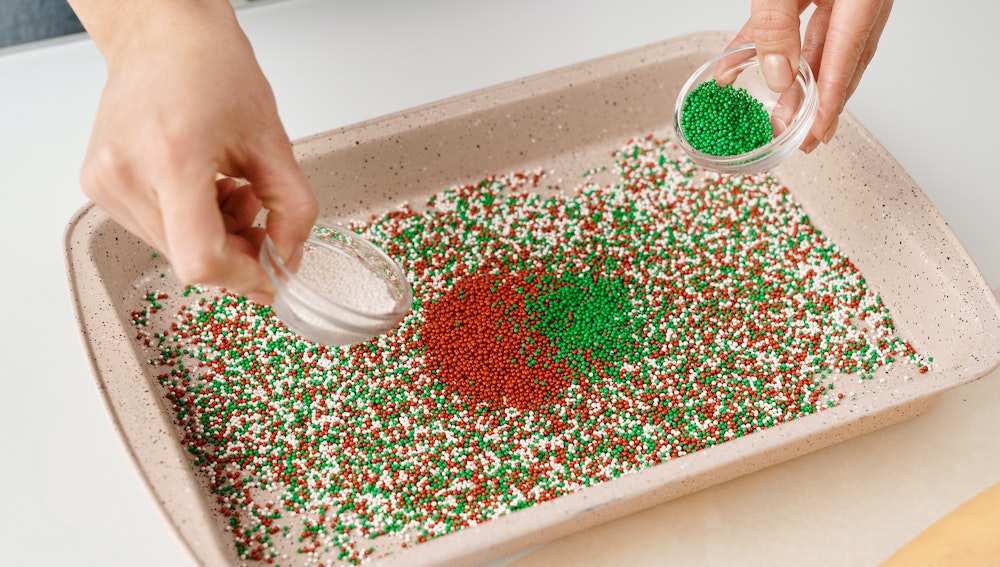
The link between color and psychology plays a significant role in how we perceive and interact with our environment, including our food. The color of a food, such as red, can greatly impact our sight and influence our psychological response towards it.
Red, an eye-catching and bold color, is often associated with natural flavors and ripe fruits. We are hardwired to recognize its warmth and vitality.
The color of food directly impacts our appetite by appealing to our sight and evoking specific emotions. Research on the psychology of color has found that red can increase our appetite by stimulating and energizing us.
Food coloring, specifically red dye, can have a psychological impact on how we taste a dish, primarily through perception. When we see a familiar food color, our brain associates it with past taste experiences, making us believe that we’re tasting something similar.
This effect is significant, to the point that changing the color of a well-known dish can completely alter our perception of its taste.
However, it is crucial to emphasize that food coloring itself does not have a pronounced taste or flavor. It serves as a visual aid to enhance our psychological response and create an expectation of how the food will taste.
In conclusion, while food coloring does not inherently have a taste, its effect on the human mind’s perception of color heavily influences our experience and interpretation of a dish’s flavor.
The psychological power of color should not be underestimated, as it holds the potential to change perceptions of taste without actually altering the food’s ingredients.
Types of Food Coloring and Their Flavors
Food coloring is a popular ingredient used to enhance the visual appeal of various dishes, particularly in the realms of baking and decorating.
There are several types of food coloring available, each with their potential contribution to the flavor of dishes they are used in.
Liquid Food Coloring is the most common form and is water-based. It is typically used for coloring icings, frostings, and cake batters.
However, due to its water content, it can impact the texture of certain recipes like fondant. The flavor of liquid food coloring is generally neutral and does not add or alter the taste of the dishes it is mixed with.
Gel or Paste Food Coloring offers a more concentrated color, allowing for brighter hues without requiring a large amount. These colorings are ideal for decorating cakes, candies, and other confections.
They are easy to mix into frosting, buttercream, or fondant and do not affect their consistency. Gel and paste food coloring have a minimal impact on taste, usually resulting in a flavorless addition to recipes.
Powder Food Coloring is another option that delivers a concentrated color without impacting the consistency of the recipe. It is often used in royal icing, fondant, and other baking applications where water content is critical.
When it comes to flavor, powder food coloring is almost tasteless, ensuring the recipe’s original flavors are not affected.
Natural Food Coloring originates from plant-based sources such as fruits, vegetables, and spices. These options are often sought by health-conscious bakers and have become increasingly popular.
In comparison to their synthetic counterparts, natural food colorings are more likely to contribute a mild flavor to dishes due to their organic origins. For instance, using beetroot powder as a natural red dye may add a subtle earthy taste to the dish.
In summary, food colorings generally have a negligible impact on the taste of a dish. The exceptions to this rule are certain natural food colorings derived from ingredients with distinct flavors. While enhancing the presentation of various foods, food coloring largely leaves the flavor profiles intact.
Natural vs. Artificial Food Coloring
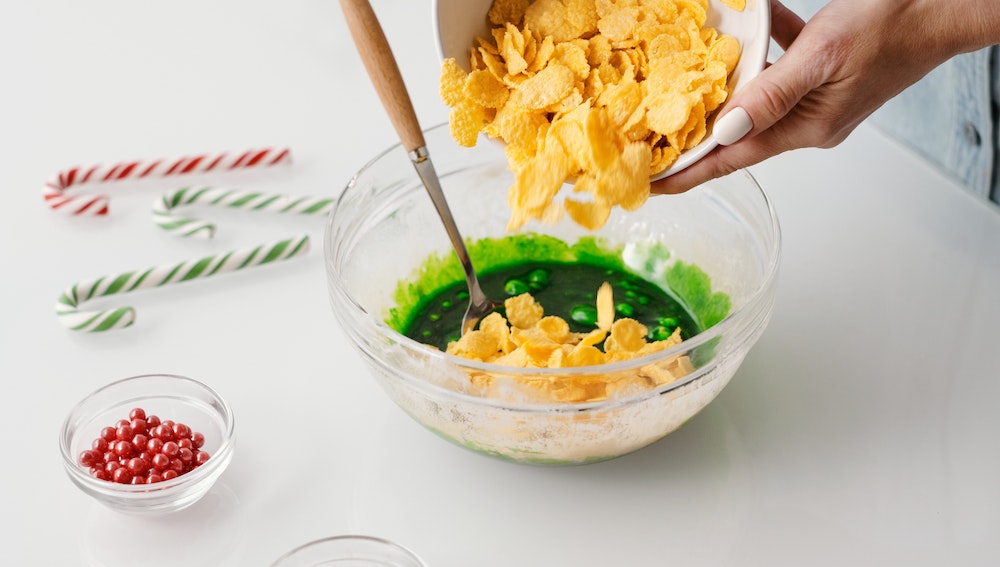
Natural food coloring is derived from plant, animal, or mineral sources and has become increasingly popular as consumers seek cleaner and healthier options for their food.
Examples of natural food colorings are beetroot for red and purple shades, and turmeric for yellow hues. While these colorings generally do not impart a strong taste, their use can sometimes lead to subtle flavor changes in the final product.
On the other hand, artificial food coloring is made from synthetic compounds or chemicals, typically petroleum-based. One example of an artificial food coloring is erythrosine, which imparts a reddish hue to products like candies and processed meats.
Although artificial food colorings are often used for their vibrant and uniform color, they can sometimes cause a noticeable, bitter taste in food.
In terms of taste comparison, natural food colorings are generally considered to be smoother and less likely to affect the overall flavor of a product. However, some natural colorings, such as beetroot, can add earthy undertones to certain foods, which may be undesirable in some cases.
On the other hand, artificial food colorings may cause a more pronounced bitterness, especially if used in large quantities. This bitter taste can become more noticeable in products like frostings or fillings, where the colorant is applied in higher concentrations.
It is essential to consider the specific types and amounts of food colorings used to balance both the visual appeal and flavor of a product.
While natural food colorings are generally preferred for their gentler effect on taste, it is crucial to note that both natural and artificial food colorings serve a purpose in the culinary world.
In some cases, it is necessary to combine or switch between natural and artificial food colorings to achieve the desired result in terms of both appearance and taste.
Life and Effectiveness of Food Coloring
Food coloring is a common additive used to enhance the visual appeal of food and drinks. As it is frequently used in various food items, it is regulated by the FDA to ensure its safety.
The life and effectiveness of food coloring are crucial aspects to consider as they contribute to the overall quality and experience of consuming colored food products.
The shelf life of food coloring depends on its type. Synthetic food colorings, such as FD&C dyes, generally have a longer shelf life than natural food colorings extracted from plants, insects, or minerals.
Most synthetic food colorings can last up to five years, while natural food colorings have a shorter lifespan of around one to two years. To maintain their effectiveness, food colorings should be stored away from light, heat, and moisture in a tightly sealed container.
In terms of taste, most synthetic food colorings are relatively tasteless at the concentrations used to color food. However, when used in large amounts, they may impart a mild, chemical taste.
On the other hand, natural food coloring extracts may carry some flavor notes derived from their sources, such as beet juice, fruit, and vegetable extracts. The taste of natural food coloring usually depends on the source and concentration used in the food product.
The FDA sets guidelines to ensure the safety and quality of food coloring used in food products. The FDA-approved food colorings are considered safe for consumption within the specified limits. Some natural food colorings, such as annatto and turmeric, have additional benefits as they also contain antioxidant properties.
In sum, the life and effectiveness of food coloring are influenced by factors such as the type of coloring, storage conditions, and usage concentrations.
By adhering to FDA guidelines and using food colorings within their recommended shelf life, users can expect a visually appealing product without compromising taste or safety.
Experimentation with Food Coloring
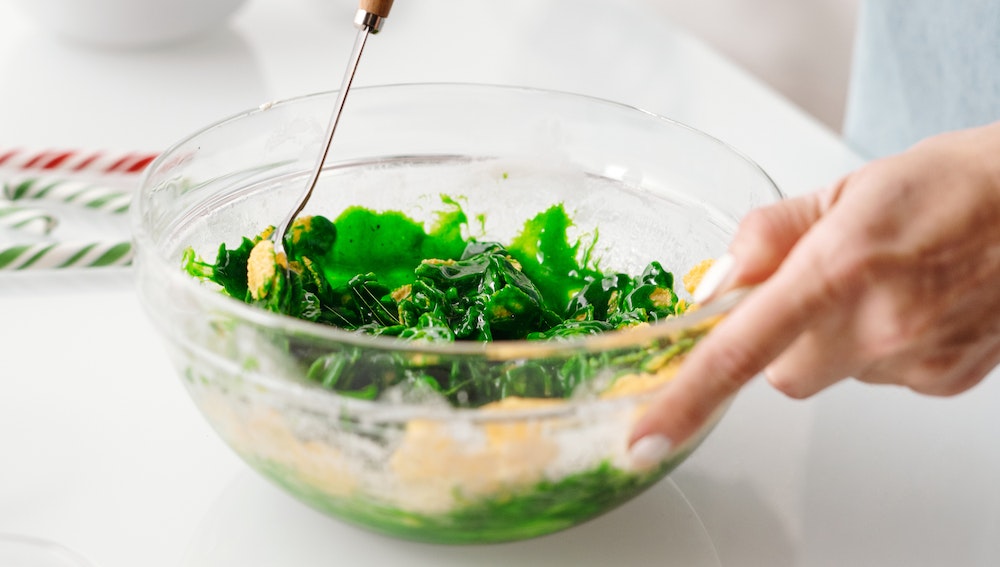
In a series of experiments designed to test the taste of food coloring, various brands and compositions were tested across different food types.
The goal of these experiments was to identify any distinct tastes that could be attributed to the addition of food coloring.
One experiment focused on the effect of adding different quantities of dark colors to white wine. The researchers used a blind taste test with varying concentrations of food coloring in the wine samples.
Participants were asked to identify any differences in taste and, if possible, determine the specific color added. In this experiment, no significant differences in taste were reported, regardless of the concentration or brand of food coloring used.
Another experiment aimed to investigate the taste of food coloring in a more commonly colored food – red velvet cake. Using different brands of red food coloring, including those with various compositions, multiple cake batches were prepared.
The selection of the red velvet cake was mainly due to the popularity of this dessert, which relies significantly on the red food coloring to achieve its distinctive appearance. To assess the impact of the food coloring on taste, a control group of traditional chocolate cakes was prepared without any added coloring.
The taste tests showed minimal difference between the red velvet and chocolate cakes, indicating subtle to no taste contributions from the red food coloring.
Lastly, experiments were conducted to identify any taste variations between brands and their respective compositions. Researchers tested different brands of food coloring in a neutral base and had the participants rate the taste differences.
The results showed that specific brands and compositions had a slightly more noticeable taste impact than others. However, the overall taste differences were minimal and generally undetectable within actual food dishes.
Through these experiments, it can be confidently stated that food coloring, in most situations, does not impart a significant taste to the finished product.
Although slight variations in taste may occur depending on the food coloring brand or composition, these differences are unlikely to affect the overall flavor profile of the dish.
Related post: How to Make Skin Colored Frosting
Frequently Asked Questions
What types of food coloring have a distinct taste?
Some types of food coloring do have a noticeable taste, particularly those made from synthetic dyes. Red and yellow food colorings tend to have the most detectable flavors, which can be described as slightly bitter or chemical-like.
On the other hand, many blue and green food colorings have a milder taste, resulting in a less noticeable flavor when used in recipes.
Do natural food colorings have a taste?
Natural food colorings are derived from fruits, vegetables, or spices and generally have a milder taste compared to synthetic food colorings.
The taste of natural food colorings will depend on the source and concentration, but they typically blend well with the flavors of the dish they are added to.
How can I reduce the taste of food coloring in my dish?
To minimize the taste of food coloring, it’s essential to use the appropriate amount for your recipe. Start by adding a small amount, then gradually increase until the desired color is achieved.
Using natural food colorings or quality food colorings with milder flavors can also help reduce the taste impact on your dish.
Does liquid food coloring taste different from gel food coloring?
There may be slight differences in taste between liquid and gel food colorings due to their formulations. Liquid food colorings can have a more diluted flavor, while gel food colorings tend to be more concentrated and thus may have a stronger taste.
However, the difference in taste is generally minimal and should not significantly affect the flavor profile of your final dish.
Do food colorings taste differently in various beverages?
Food colorings can react differently in various beverages, depending on factors such as the beverage’s acidity, sweetness, or flavor intensity.
While some food colorings might have a noticeable taste in certain drinks, others may blend well and not affect the taste significantly. Experimenting with different food colorings and beverages can help you determine the best combination for your desired outcome.
Are there any tasteless food colorings available for baking and cooking?
Yes, some tasteless food colorings are available, mainly in the form of high-quality gel or powdered food colorings.
These products are designed to impart vibrant colors without affecting the flavor profile of the dish. When searching for tasteless food coloring, look for brands that promote a no-taste or neutral taste in their product descriptions.





